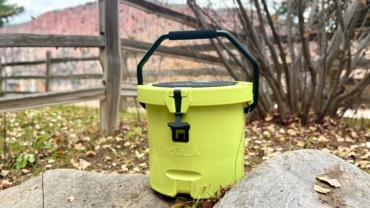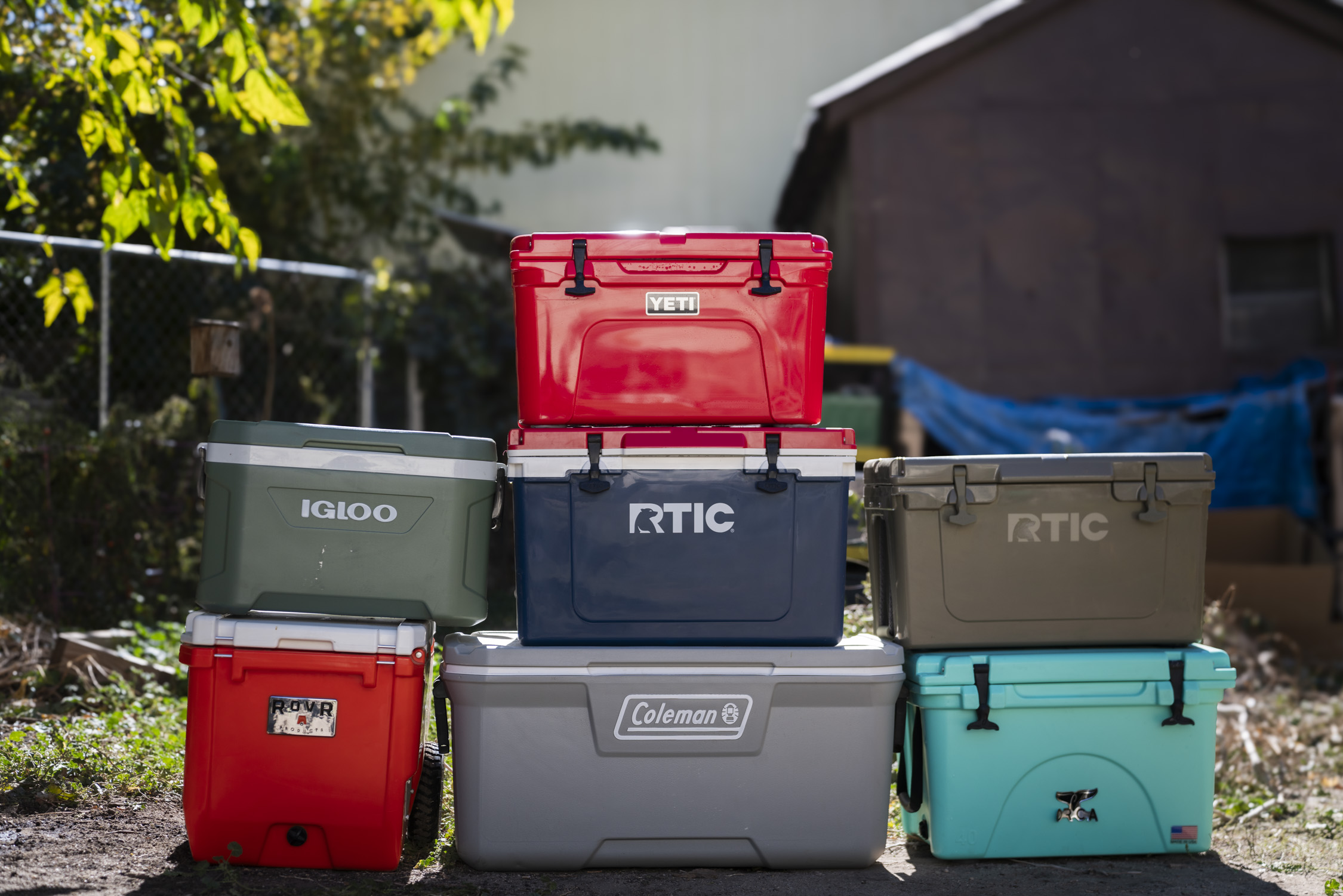If you’re heading into bear country, it’s absolutely vital to store your food and other scented items safely out of reach from hungry bears. This protects you, the bears, and the overall experience you’ll have outdoors.
Many established campsites in bear country have designated bear-proof boxes or canisters. This is especially common in national parks. However, if you’re backpacking or dispersed camping, that may not be the case, and toting around a heavy bear canister can add a lot of extra weight.
Enter the bear bag. A bear bag protects you and your food from bears and keeps the bears from associating humans with food. If you hang it correctly, bear bags can be a fairly effective and lightweight solution for keeping bears or other curious critters out of your food. Here, we’ll cover three ways to hang a bear bag.
What You’ll Need
- Bear bag
- Medium-sized rock or small stuff sack with gravel
- Approximately 50 feet of rope or paracord
Optional:
- Carabiner
- Small stick or tent peg
Pack Your Bear Bag
Make sure you pack every bit of food, trash, and scented products into your bear bag. That includes toothpaste, deodorant, sunscreen, and insect repellant. Don’t think that just because something is sealed its safe from bears and critters — it’s not.
While it’s easy enough to use a dry bag or stuff sack as a quick and lightweight bear bag, we recommend going for something a little sturdier like the Ursack Major Bear Bag.
Ursack’s bags use super-strong Spectra fabric and passed the “Interagency Grizzly Bear Committee test,” meaning that even if the bear got your bag down, it still would have a hard time getting at your food.

Choose a Tree
Find a tall, sturdy tree at least 200 feet away from your campsite. The tree should have a reasonably sturdy branch that’s 18 to 20 feet above the ground and least 6 feet long. This branch should be strong enough to hold the bag, but not so big to support a bear.
If you can’t find one tree with a high enough branch, you can use the two-tree method (see below). In that case, look for two trees at least 20 feet apart.
Choose a Hanging Method
There are a number of different ways to hang a bear bag. The main three are:
- Traditional
- PCT
- Two-tree
Each one has its own positives and negatives. Some wilderness sites even have a bear pole, which allows you to clip your bag to the line and hoist it up.
The traditional method is simple but also not as secure as the PCT method. If a bear knows the drill, it can slash your line and your food will drop.
With the PCT method, even if the bear slashes the line, your food will stay hanging. This method needs a bit more gear and is a little trickier to set up.
The two tree method is great for when you can’t find one tree with a high enough branch, but you have two shorter, widely spread out trees.
The Traditional Method
This is the classic, simple way to keep your food away from bears. Once you have your tree, tie your string to the rock (or small bag of rocks) and throw it over the branch you plan to use. Replace the rock with your bear bag so it’s securely tied to the end of the cord.
Hoist the bag up by pulling on the other side of the rope. You want your bag to hang at least 12 feet off the ground, 6 feet below the branch, and 6 feet away from the trunk.
Once you’ve got your bag in the right position, tie off your cord on a different tree to make sure your bag stays in the right place.
Done correctly with a strong cord, this method is straightforward and effective against less-determined bears. Be aware though, that if a bear manages to break or untie the string, your food will fall and be readily available.

The PCT Method
With this method, set up your rope the same way as with the traditional method. However, when you attach your bag, use a carabiner to clip your bag to the rope, then clip the other side of the rope into the carabiner too — so the rope runs through the carabiner as you hoist the bag up.
When you pull up the bag, pull it all the way to the branch. While holding the rope, secure your stick or tent peg with a clove hitch as high up on the rope as you can reach.
Gently lower the bag until your stick catches on the carabiner and stops the rope. To retrieve your bag, pull the rope back down, take the stick off, and lower the bag.
The 2-Tree Method
If you don’t have a tall enough tree, you can use two trees around 20 feet apart from each other.
Throw one end of the rope over a branch on one tree, then throw the other end of the rope over the second tree’s branch.
Attach your bag to the cord in the middle of the two trees with a carabiner, or an overhand knot on a bight.
Secure one end of the rope to its tree, then pull the rope tight at the other end. You want to end up with a tight line between the two trees at least 12 feet above the ground with your bag suspended in the middle.
Protect Your Food, Keep Bears Safe

No matter which method you choose, the most important thing is to do it correctly. Practice your method of choice in your backyard or a park before you head out camping.
If you’re unsure of your hanging ability, consider bringing a bear canister instead (but know that this is a heavier option). Also know that some areas specifically require a canister no matter your bear bag knowhow.
Remember that letting a bear get to your food can make the bear (and area) dangerous for future hikers and campers. Having a bear problem may also force the land agency to relocate or even kill the bear if it gets too accustomed to human food. Learn how to hang a bear bag and protect yourself, others, and the bears.








